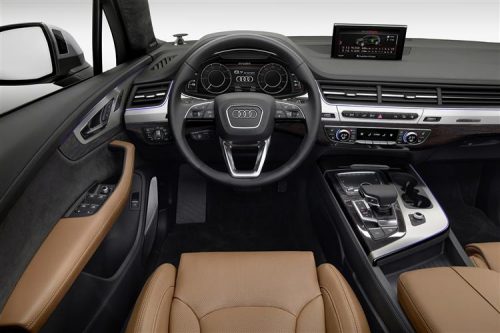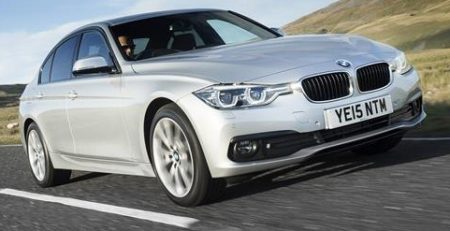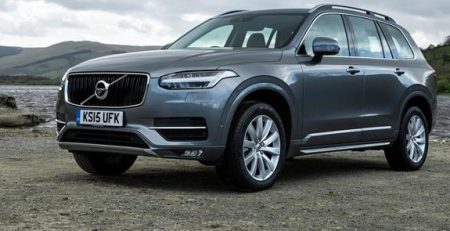Maximise resale value of your new BMW with these specs Specify you factory ordered car properly with a BMW configurator. Th read more
Comparing Plug-in Hybrid Technology
How does plug-in hybrid technology vary between car manufacturers?
We all see the benefits of plug-in hybrid cars; reduced fuel costs, less carbon emissions and higher resale values to name but a few – but with so many companies offering ranges, how do you choose which one is right for you?
Making this decision even more complex is the fact that each company has its own jargon, so direct comparison can be difficult.
Well, at AutoeBid, we’ve done our homework so you don’t have to!
The three main types of hybrid car
Firstly, it’s worth looking at the real basics. Hybrids are cars that utilise two different engine types (electric and petrol) in various ways to enhance economy.
Full Hybrid – Full hybrids have two separate engines (electric and petrol) meaning either can drive the car. The petrol engine can shut off completely for a fully emission-free drive. Depending on the car and mode, the electric motor is commonly used for initial acceleration and to cruise once speed is reached. These hybrids can also function in parallel mode, where both engines contribute to driving the car simultaneously.
Mild Hybrid – The electric motor isn’t powerful enough to drive the car alone, meaning the petrol one is always running and the electric is more of a ‘helper’. These cars can only operate in parallel mode.
Plug-in Hybrid – These cars are essentially full hybrids with an extra trick – bigger batteries. These batteries are too big to fully charge from the car alone (with only a couple of exceptions), so they need to be plugged in to charge. This system makes them perhaps the most efficient of all.
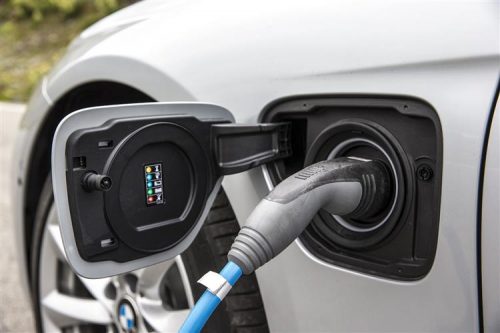
That's why this article focuses on plug-in hybrid; most key manufacturers are expanding their ranges of this hybrid type.
Knowing what to look out for
Most manufacturers name their hybrid technology separately of their cars (eg: the BMW iDrive or the Volvo T8), and these technologies are then added to a number of cars or models giving a hybrid option (in a similar way to diesel/petrol versions).
To make things easier, it’s worth looking at some of the most common features hybrid cars have to offer. Each manufacturer covers some, or all, of these features within their hybrid technology. Once you know what to look out for, comparing them is a little bit easier.
Brake Energy Regeneration (Regenerative Braking)
This technology captures kinetic energy from every brake, and uses it to recharge the battery.
Hybrid ‘Modes’
Most hybrids have several different modes to choose from, depending on where and how you’re driving. These are usually things such as:
- Parallel mode – using both engines to power the car (as above).
- All electric mode – allowing the car to run on electricity alone. This usually has a range of about thirty miles.
- Series hybrid mode – using the petrol engine as a generator for the battery. This allows for an extremely efficient use of fuel when the battery reaches a predetermined level.
While the names of the modes differ from company to company, you are almost guaranteed to see at least two of the above described by the manufacturer. There may also be sport modes and other less common features that allow the manufacturer a USP. This is particularly the case with more expensive cars.
Economy
All manufacturers want to boast about economy of their cars. It’s the latest craze as environmental concerns and austerity have more significance than ever. Manufacturers tend to have differing ways of presenting their numbers, so here are ones to look out for that should be easily comparable:
- All-electric range – the range of miles on the electric motor alone
- Miles per gallon – self-explanatory, but be aware that these can vary depending on which mode the car is tested in (so be careful when comparing between manufacturers).
- Charge times – all charge times vary depending on strength of current and voltage, and so, are approximations.
Hybrid Systems Compared by Manufacturer
This is a run-down of the hybrid systems and terminology used by several top manufacturers, and how they compare to each other. For the sake of comparison, one car has been picked for each company for economy figures.
Mitsubishi PHEV
Mitsubishi’s hybrid technology is called PHEV. It's currently available in their Outlander model.
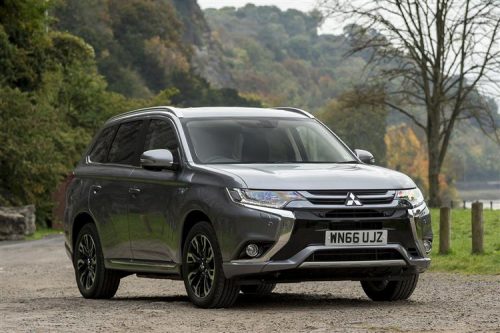 Mitsubishi Outlander PHEV
Mitsubishi Outlander PHEV
It switches between the various modes automatically, optimising fuel consumption intuitively based on the type of driving you’re doing.
It also features a parallel driving mode, regenerative breaking, and even a series hybrid mode. This means the engine can re-charge the electric motor optimizing efficiency, particularly when powerful performance is required. This is a feature not all hybrids offer.
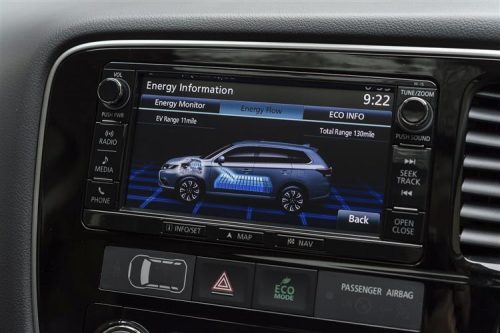 Mitsubishi Outlander display
Mitsubishi Outlander display
The Mitsubishi Multi Communication System gives the driver detailed information about the battery and power usage. It also logs past journeys so you can analyse and compare performance.
Economy Figures:
- 148 mpg - perhaps the most surprising figure on plug-in hybrids generally is the miles per gallon. This is particularly worth comparison between manufacturers.
- 32 mile range in electric mode.
- Charge time: 5 hours (domestic) ‘80% charge in 30 mins’ (charging point).
Lexus Hybrid Drive
While they build excellent hybrid cars, none of them are currently plug-in hybrids. This means they will be more reliant on the petrol motor, as the ability to top up the battery at home isn't there. That said, with the most hybrid sales of any luxury brand worldwide, Lexus is a key player in the market.
Lexus' full hybrid offerings are packed with tech, often including stop/start technology and exhaust heat recycling to reduce fuel costs.
The RC 300h Hybrid is one of the key offerings from Lexis. Although you can technically run the car on electric only, as soon as a speed of more than 30mph is reached, the petrol engine tends to cut in. Be aware that the combined mpg is bound to be lower than a plug-in hybrid because it relies totally on the engine to recharge the battery so the petrol is used more quickly.
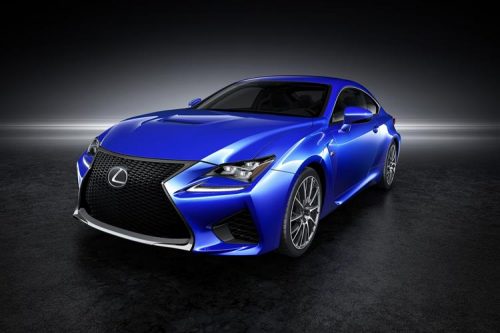 Lexus RC 300h
Lexus RC 300h
The modes on this car are simply:
- ECO mode – reduces emissions and conserves fuel while, for everyday driving,
- NORMAL – which provides an ideal balance of power, economy and ride comfort.
- SPORT or SPORT – which enhance drive-train responsiveness.
Economy figures:
- 57.6 mpg.
- Charge time and electric mode are not applicable.
Volvo T8
Volvo’s T8 technology is currently available in the Volvo XC90.
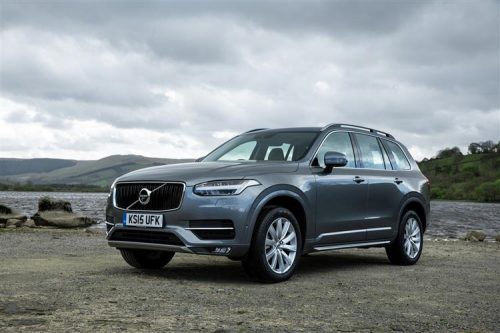 Volvo XC90 T8
Volvo XC90 T8
The T8 system has several clever modes, and runs automatically in a way that maximises the charging power (in a similar way to the Misubishi). It incorporates Brake Energy Regeneration and has a specially developed POD power charger (which you can get a £500 government grant towards buying). This increases the charge speed when you’re at home.
It includes four modes:
- Hybrid Mode – is their parallel mode, means the car uses both engines in tandem (albeit with some clever software from Volvo to maximise mpg).
- Pure Mode – the electric-only option.
- Power Mode – uses the electric motor for quick acceleration and increased torque.
- Save Mode – demands less of the battery so you can save it for city driving where it will be most efficient.
The Volvo has some unexpected features, like impressive acceleration (0-60 in 5.8 seconds), and over 394 (combined) bhp, setting it apart from its competitors.
It’s also worth noting that the XC90 is a five-door hatchback, so that makes the miles per gallon all the more impressive.
Economy Figures:
- 134.5 mpg.
- 27 or 31 mile range in electric mode (depending on engine size).
- Charge time: 7 hours (domestic) 2.5 hours (charging point).
Mercedes Hybrid Technology
The Mercedes Hybrid technology is predominantly available in their E-range of cars, including the saloon, estate, coupe, and cabriolet.
It’s strikingly similar to that of the Volvo; it has almost the same list of modes. Unlike the Volvo, it also has a dedicated Charge Mode where the engine works harder to charge the battery more quickly. This is useful to cut down on mains charging. The electric motor reportedly cuts in smoothly when needed – well, you wouldn’t expect any less from a Merc.
At the risk of sounding like Top Gear, the main difference when you step up to this level of car is the surprising amount of power they offer, dispelling the myth that hybrids are slow cars for steady people. Take the E350e, for example. It offers a turbocharged four-cylinder engine and an electric motor, which together deliver 281bhp. What is maybe even more surprising is that you don’t lose on the economics either, with a predicted 134 mpg and CO2 emissions of 49 g/km.
Economy Figures (for E350e):
- 134 mpg.
- 20 mile electric range.
- Charge time: 6 hours (domestic), 1 hour 45 (charging point).
Audi e-tron
In Audi’s own words, the e-tron is a step towards their vision of being ‘CO2 neutral’.
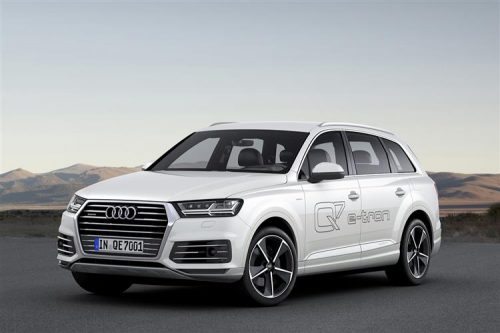 Audi Q7 e-tron
Audi Q7 e-tron
While having similar modes to the other plug-in hybrids, the Q7 e-tron has an exclusive feature: Predictive Efficiency Assist. This system uses satellite navigation, camera, and even radar readings to generate a prediction of the road for up to two miles ahead. It will then advise you on how to drive most efficiently based on this information, so you get the most from the battery and fuel.
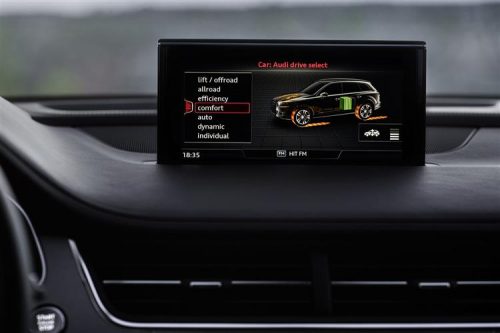 Audi Q7 Display
Audi Q7 Display
The Audi e-tron system also maintains their trademark all-wheel drive technology, so you get the drive you would expect from an Audi.
Economy figures (for Q7 e-tron):
- 156.9 mpg.
- 24 mile electric range.
- Charging time: 8 hours (domestic), 2.5 hours (charging point).
BMW eDrive
BMW have so many terms surrounding their hybrid technology they practically need a glossary of their own; iPerformance, eDrive, eBoost and ActiveHybrid to name but a few. In BMW’s own words: ‘the BMW iPerformance vehicles use the BMW eDrive electric drive technology developed by BMW i’ – so make of that what you will.
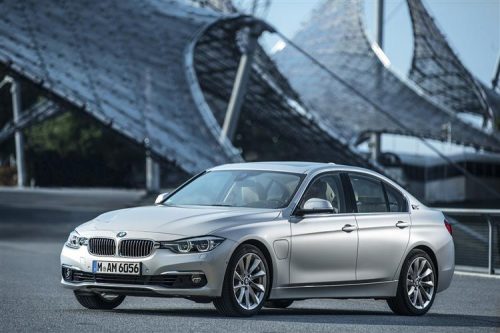 BMW 330e
BMW 330e
Anyway, eDrive is the BMW software providing intelligent use of their hybrid technology.
The modes are:
- AUTO eDrive – their version of a standard hybrid mode.
- MAX eDrive Mode – their name for the total-electric mode.
- Battery Control Mode – similar to the Merc’s ‘Charge Mode’, but in the Beamer, only the petrol engine is used while the battery recharges to your required level.
- Predictive Selection – similar to the Audi’s feature, this will analyse an inputted route using constant data (such as speed limits and real-time traffic reports) to utilise your electric motor output.
Sportier models also include eBoost technology allowing for quicker acceleration (not disimmilar to the Power Mode in the Volvo T8 system). BMW are constantly increasing their range of iPerformance cars (hybrids), which encompass a technically sophisticated range of features.
Economy figures (for the 330e):
- 141.2 mpg.
- 22 mile electric range.
- Charge time: 3-5 hours (domestic) 2-3 hours (charging point).
Toyota Hybrid Synergy Drive
Perhaps the first brand we think of when it comes to hybrids generally, Toyota are the market leaders.
The all-new Prius Hybrid (coming soon) is said to achieve a whopping 282 mpg and only 22g/km emissions. It will, naturally, feature all of Toyota's famous tech, ranging from regenerative braking technology, through to advanced power management and even solar panels. It also has a 'power' button which makes the two engines to work together for when you need a little extra boost. This might be when overtaking.
Economy figures (for the all-new Prius Plug-in):
- 282 mpg.
- 39 mile electric range.
- 2 hours (on 16 amp supply), domestic time not yet released.
All in All . . .
The main car companies are all developing similar technologies. While the Audis, Mercs and Beamers offer some nice features for those seeking a luxury car, the important technological aspects are certainly present in more affordable cars.
Whichever company you go for, you can use the basics here to find your way a little easier. Take a look through the range of plug-in hybrids available at AutoeBid.

